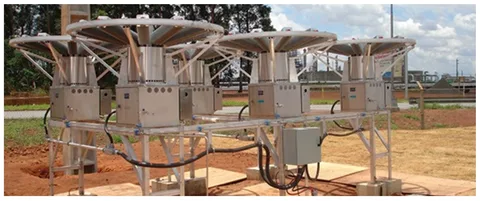Introduction
The US Thermoelectric Generator (TEG) Market is emerging as a crucial player in the nation’s clean energy transition, offering an innovative way to convert waste heat directly into electricity. These generators utilize thermoelectric materials that harness temperature differences to produce power without moving parts, making them efficient, silent, and low-maintenance. As industries seek to optimize energy utilization and reduce carbon emissions, thermoelectric generators are finding applications across automotive, aerospace, oil & gas, and industrial sectors. With growing emphasis on energy efficiency, sustainability, and waste heat recovery, the TEG market is poised for robust growth across the United States.
Market Drivers
The primary driver of the US Thermoelectric Generator Market is the increasing focus on energy efficiency and waste heat recovery across key industries. Automotive manufacturers are adopting TEGs to capture exhaust heat and improve fuel economy. In industrial settings, thermoelectric systems are being used to convert heat from machinery, furnaces, and refineries into usable electricity. The growing adoption of clean energy technologies, coupled with government incentives for reducing emissions, further supports market expansion. Advancements in thermoelectric materials such as bismuth telluride and silicon-germanium are also enhancing conversion efficiency, driving demand for TEG solutions across diverse applications.
Market Challenges
Despite its promising potential, the TEG market faces notable challenges. High material and production costs limit large-scale adoption, especially in commercial applications. The relatively low conversion efficiency of current thermoelectric materials compared to other energy systems can restrict deployment in high-power applications. Additionally, the lack of standardization in thermoelectric system design and integration poses technical hurdles. Limited awareness and the slow pace of commercialization also hinder growth. Addressing these challenges requires continued R&D investment, breakthroughs in material science, and collaborative efforts between industry and research institutions to make TEGs more cost-effective and scalable.
Market Opportunities
The US Thermoelectric Generator Market presents significant opportunities in emerging and existing energy-intensive sectors. The growing demand for autonomous and off-grid power sources is driving TEG adoption in remote sensors, defense, and aerospace applications. The oil & gas industry is exploring thermoelectric systems for power generation in pipelines and drilling operations where heat loss is abundant. In renewable energy systems, TEGs can complement solar and geothermal sources by capturing and converting excess heat. Additionally, the shift toward electrified transportation and industrial automation offers new pathways for integrating TEGs into next-generation power and efficiency systems.
Regional Insights
The western and southern regions of the United States, including California, Texas, and Arizona, are leading markets due to their concentration of industrial facilities, renewable energy initiatives, and R&D activity. The Midwest region is also seeing growing adoption in manufacturing and automotive industries, where waste heat recovery is becoming a strategic focus. Defense-related demand from federal projects and aerospace hubs in states like Florida and Virginia further supports market growth. Research clusters in Massachusetts and California are driving material innovation and commercialization, contributing to regional competitiveness in thermoelectric technology development.
Future Outlook
The future of the US Thermoelectric Generator Market looks promising as industries prioritize sustainability and resource efficiency. Technological advancements in nanostructured and high-efficiency thermoelectric materials are expected to enhance performance and reduce costs. Integration with IoT and smart monitoring systems will enable real-time optimization of energy recovery. The market is also likely to see growth through hybridization—combining TEGs with solar or battery systems to maximize power generation. As the US pushes for energy independence and carbon neutrality, thermoelectric generators will become an integral component of industrial decarbonization strategies and distributed power networks.
Conclusion
The US Thermoelectric Generator Market embodies the innovation driving the future of clean and efficient energy systems. By converting waste heat into electricity, TEGs offer industries a practical solution for reducing energy loss and emissions. As technological progress accelerates and sustainability targets become more aggressive, thermoelectric generators will play an increasingly vital role in the nation’s energy landscape. Their silent operation, durability, and versatility across industries make them a key contributor to America’s mission of achieving a greener, smarter, and more energy-efficient future.

